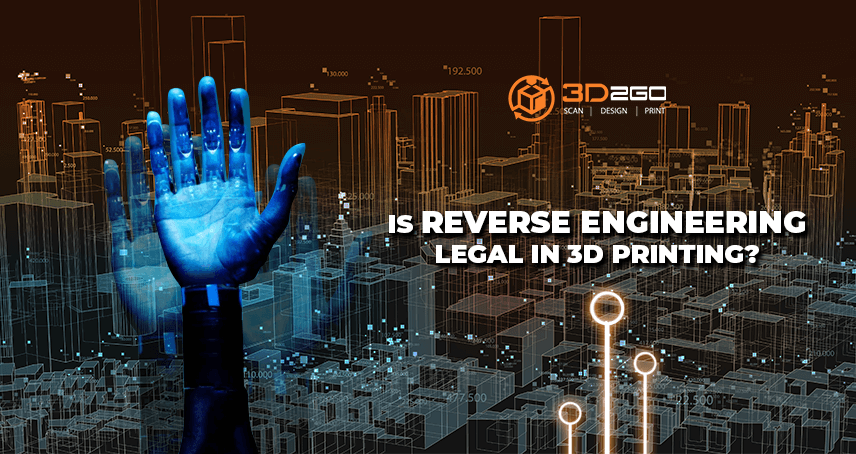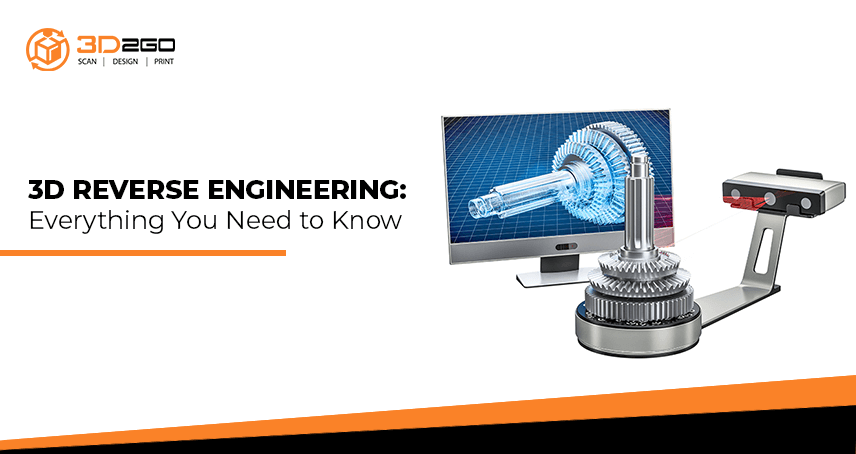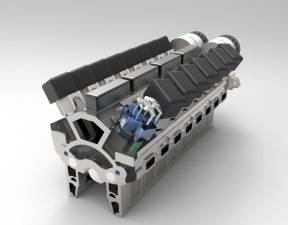
Choosing The Perfect Prosthetic Limbs
June 25, 2022
What Adult Toy Collectors Should Know About High Quality 3D Printed Toys
June 25, 2022Answers to the Is Reverse Engineering Legal in 3D Printing Question
Additive manufacturing or 3D printing has become a game changer with regards to production. This is true across industries from healthcare, manufacturing, and engineering. This innovation is quite young and still in development. But it’s almost endless abilities when it comes to creation has now become a double-edged sword.
3D printing enables anyone to create almost anything, given a 3D file is available. The hype on this technology is further amplified with accessibility to a 3D printer or a laser scanner 3D. As well as the advent of free online 3D file sharing platforms like Thingiverse.
These factors add up to the mass accessibility of 3D printing technology. Also it poses new legal challenges along the way. Reverse engineering is one of them.
What is Reverse Engineering In 3D Printing?
This process enables you to replicate an object or parts using 3D printing. This may involve dismantling of parts, then creation of a soft copy file of its dimensions through CAD or 3D modelling software.
One of the fastest and easiest ways is 3D scanning reverse engineering. For example, you want to reverse engineer a specific part of an old machine that needs repair. You need to scan the object with a laser scanner 3D like Drake or THOR3D. The scanned output is the 3D file of the object.
This file output has the exact dimensions and details of the object. Some use 3D printers to replicate busted parts.
Reverse engineering has been beneficial in the following industries:
- Aerospace
- Defense
- General Engineering
- Oil & Gas
- Energy
- Automobile Spare Parts
Uses of Reverse Engineering
These are the common reasons why industries use reverse engineering:
- Production or reproduction of parts and jigs no longer available in the market
- Reproduce an existing complex part without having to redesign it using CAD
- Reduction in machine downtime
- Improve and prolong the efficiency of existing parts
- Cost saving
- To change or repair a product
- In order to provide related service
- Create a compatible or competitive product
Also this has been a traditional way to learn existing complex methods to come up with newer and better innovations.
Is Reverse Engineering Legal in 3D Printing?
Reverse engineering is not illegal per se. As declaring it as such would halt innovation and improvements of existing and new technology. This is universally embraced wherein it involves publicly available products or sets of information and takes it apart to discover its creation process.
But there are conditions where it could be illegal. These are the following:
- Reverse engineering of a product or patented object acquired through wrongful means
- “Discover” and duplicate a patented invention
- Duplicate a product under trademark protection
- Market an identical product that could cause confusion among consumers
When Is Reverse Engineering 3D Scanning Illegal?
This is an ongoing issue that is projected to further escalate in the years to come. Original copyright owners and business owners use NDA (Non-Disclosure Agreement) to protect their IP rights.
An NDA could exist between a customer and a 3D service provider regarding reverse engineering. Its violation could result in civil or criminal charges.
While there is a vague interpretation of how IP rights should protect the patent owner’s rights, NDA is an effective way to address this.
Another thing, there is the protection of file output from a laser scanner 3D under trade secret protection. This means your service provider cannot use or distribute it as it violates the law and as per NDA.
How To Safeguard Your Design Rights When Using 3D Printing?
There are various ways how businesses and innovators address this issue. Some are proposing Anti-Copying Laws to prevent unauthorized 3D printing or distribution of the 3D file from a 3D scanner.
Some steps are insertion of watermarks on digital blueprints online sharing platforms. Some like Disney use anti-scanning materials to protect their figures. While others inject QR codes onto 3D printed parts.
Businesses and key players are in a race to come up with unique ideas to ensure protection of their design and patent rights.
It remains to see which of these existing solutions will strike a balance. In the 3D printing industry with regards to design protection.
Is Reverse Engineering Legal in 3D Printing in the Philippine Context?
A 2015 article from IPAP (Intellectual Property Association of the Philippines) sums up these common questions with regards to 3D printing technology.
- 3D file created from a 3D scanner is NOT an invention under Philippine Patent Law
- The entity that produced a 3D file has NO exclusive patent rights under the same law
- Producer of the 3D file has NO copyright of the said 3D scanned data
- CAD software file simply for 3D printing purposes is not liable for infringement
3D printing or additive manufacturing is still new and in constant development. Thus the legalities lie on how national laws should meet the current needs and adapt to changes as they come.
For 3D Scanning Reverse Engineering: Go To 3D2GO
For your laser scanning 3D purposes, we offer industry-grade scanners like THOR3D and DRAKE to capture intricate details of any engineering parts. We can scan a wide range of objects or infrastructure in real time.
We work within the limits of laws and we provide NDA as per your request. We ensure your property rights are protected when you avail any of our end-to-end 3D services. Contact us today and let’s work together!






